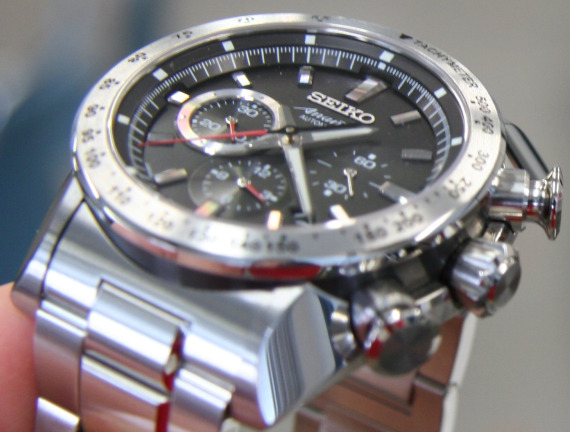
It has been a few months since I was in Japan visiting with Seiko. Shortly thereafter I wrote about the Spring Drive versions of their newish and impressive Seiko Ananta line of watches. If you recall, Ananta is Seiko’s first line of high-end watches for the world market. The watches totally changed my perception of the brand, and I think if you check them out they will change the way you look at Seiko as well. The Spring Drive watches aren’t cheap. While they are a great value for the money, the Seiko Ananta Spring Drive Chronograph watch can still get up to the $6,000 – $7,000 range. This is a larger amount of money than many people are able to spend on a watch – an important point as Seiko is such a globally “worn” brand. In addition to the Spring Drive movement based watches, the Ananta line comes in three different automatic mechanical movement forms. If you don’t know the difference between a Seiko Spring drive and normal automatic movement, I suggest you check out the article above, or search for “Spring Drive” on aBlogtoRead.com. No time to get into that now. Going back to these three “other” Ananta watches, there is the Automatic Chronograph, Double Retrograde Automatic, and the Multi-hand Automatic. Each model has a lot of appeal, and the collection has prices well below the higher-end Spring Drive models.
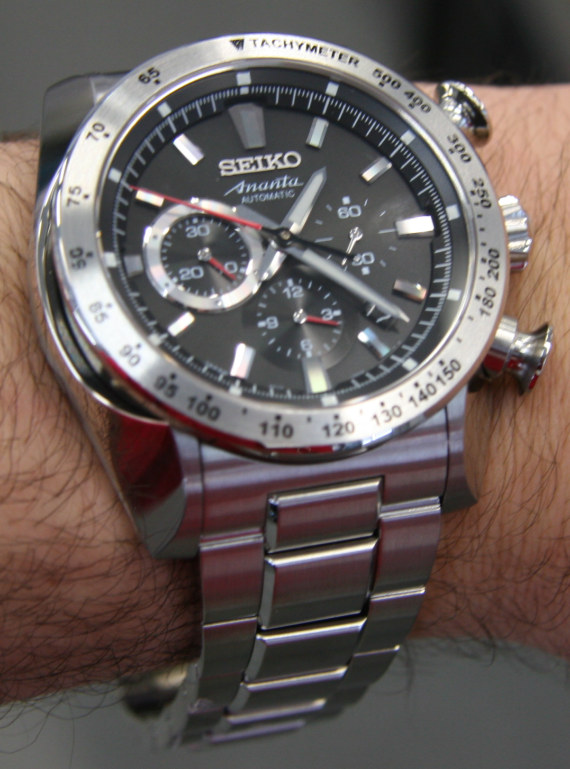
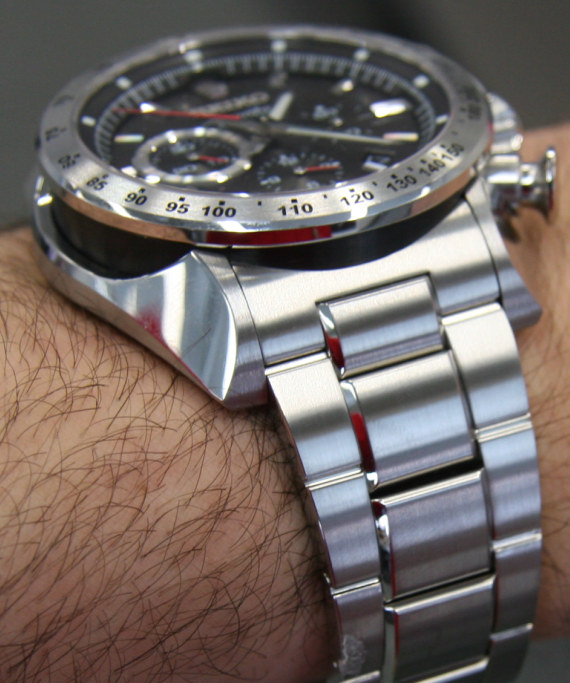
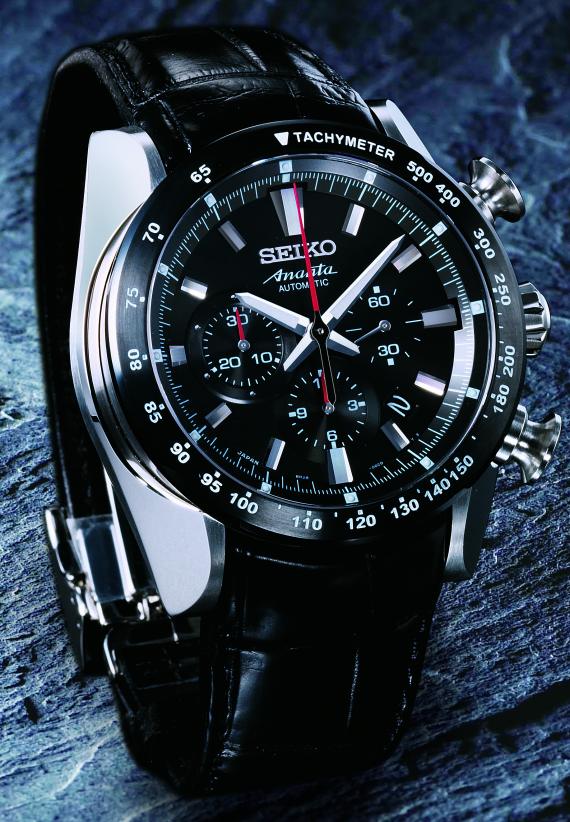
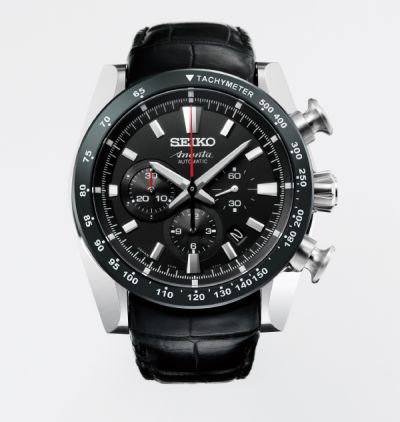
These watches really help propel Seiko as a luxury brand with models that are a more natural step up for most Seiko watch owners. Unless you really understand the significant appeal of the Spring Drive movement, moving from the prices you are used to with Seiko watches to the Spring Drive Ananta pieces is hard to do. It is more natural to go from a few hundred dollars to a couple of thousand – rather than a few hundred dollars to several thousand. The value is still really impressive in both the Automatic and Spring Drive models. I visited the manufacture in Japan where the movements in the Automatic Ananta watches are produced. The facility is almost identical in poise and style to those of the high end makers in Europe. Movements in the Automatic collection are hand assembled and meticulously tested. Finding an European watch with this level of quality and features for the same price is not going to be possible. Oh, and I should note that the Seiko automatic movements are produced in a different manufacture than the Spring Dive movement. I found that to be interesting. Both are similar though in terms of the high quality facilities, but just located in different parts of Japan.
It goes without saying that Seiko makes their own movements. Literally all components of the watch are made by Seiko as they are 100% vertically integrated. This is even applied to making balance springs (Seiko’s patented SPRON brand) and growing their own quartz crystals for their quartz movements (they have a special facility to grow synthetic quartz crystals from “seed” crystals. Which are then harvested from a complex “quartz crystal” incubator as I call it). Actually one of the only things that Seiko needs to procure are raw synthetic sapphire crystals. These are then cut, shaped, polished, and finished by Seiko for use on their watch crystals. In a time where people are concerned with quality and the location of where a high-end good is manufactured, it is a reassuring thought for me to know that the Seiko Ananta line of watches it totally made by master watch makers in Japan, by a Japanese company. I feel the same level of comfort when I see that my Japanese camera is made in Japan, and not somewhere else.
Much on the Ananta Automatic watches is the same as the Ananta Spring Drive watches. The cases are bit different, but not much. The “Katana” sides of the cases are still specially “blade polished” and the cases are also 46mm wide with sapphire crystals (water resistant to 100 meters). Watch hands are the same, and the hour markers are the same beautifully diamond polished good-lookers that the line has. All this talk of “blade” or diamond polish and cutting is not gimmicky. These watches have some of the finest polishing jobs I’ve ever seen on watches within thousands of this price range. One difference between the Automatics and the Spring Drives is the mid section of the case. The Spring Drive models have a column cut edge, while the Automatics have a smooth polished edge on the middle part of the case sides. Otherwise the big differences are in the movements and the model functions.
The first of the three models is the Ananta Automatic Chronograph. This is likely to be the most popular of the three models. It features one of the highest quality and best featured mechanical chronograph movements on the market in this price range. Inside the watch is the Seiko caliber 8R28 automatic movement. This movement is used in a few other Seiko watches (such as the Phoenix Brightz), but almost none of those are available in the US. One exception was a limited edition of 200o piece Seiko Velatura watch (ref. SRQ001) that has the 8R28 movement in it. Though it came out in 2008 and was priced higher at $3,800. Thus, if you want this cool movement, you’ll basically need to get it in this watch (unless you are in Japan!). The piece is available in two versions. With a black dial and bezel on a black crocodile strap, and one with the Ananta’s awesome metal bracelet with a steel toned bezel (in steel of course), and a steel toned frame around the chronograph minute counter (opposed to a black one). The look of the watch is very handsome, and you will love the depth of the dial. The tri-compax chronograph subdial array is a traditional look, and it has a diagonally positioned date window between 4 and 5 o’clock. The sharp katana hands have lume on them, and there are lume squares applied on the watch flange chapter ring.
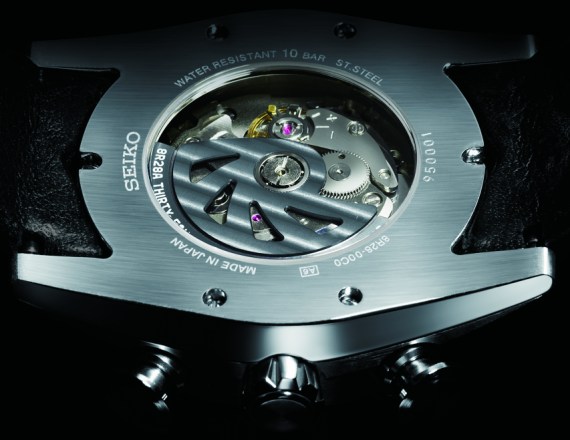
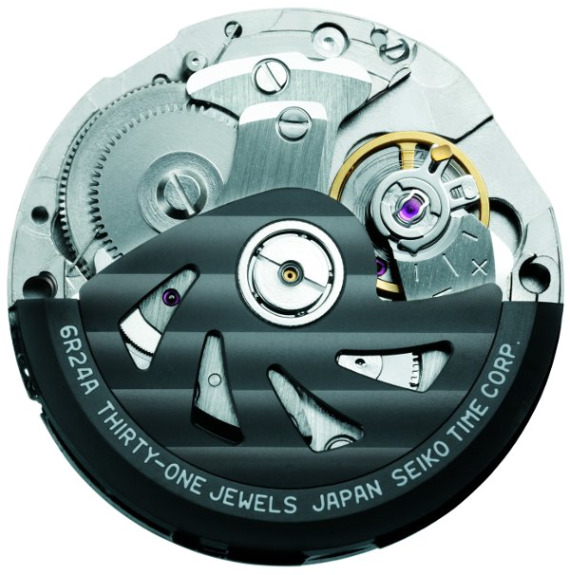
Notice the chronograph hands in all red. This keeps you from searching too hard with your eyes when reading them. This is the same as on the Spring Drive version, though that watch has a power reserve indicator as well as a GMT complication. The 8R28 12 hour chronograph operation is fantastic. The easy to press large pushers have a two position feature for highly precise operation. Press the pushers down just a bit to get them into the “ready” position, and then push them down all the way immediately start the chronograph with no lag. It is a similar system to how you operate the shutter button on most digital cameras.
The 8R28 automatic mechanical movement has some neat features aside from being nicely decorated, hand assembled and tested, and having a cool polished black katana style exposed rotor. Power reserve for the movement is about 45 hours and it beats at 28,800 bph (like each of the movements I will discuss here). The movement is really made to have an exceptional chronograph. And it totally does. This, and the Spring Drive chronograph movements, have the finest chronograph operation I have ever experienced in a wrist watch.
I already mentioned the “ready,set, go” operation of the chronograph pushers. Well how does that work? The movement has a column wheel (desired by collectors) for chronograph mechanism durability and a vertical clutch for efficient and very quick gear changes. Also, it has a single piece chronograph reset hammer (that has three points to it), that resets the chronograph very quickly. These might seem like features that only provide marginal improvements, but when relying on a feature for precise timing and ease of use, such features make a big difference. In addition to chronograph performance, I find it nice to know that features like the column wheel and single piece hammer assist in making the movement more durable. A very nice example of Japanese engineering, traditional design aesthetic, and of the most competent chronograph watches out there. price is $3,200 on both the metal bracelet and crocodile strap.
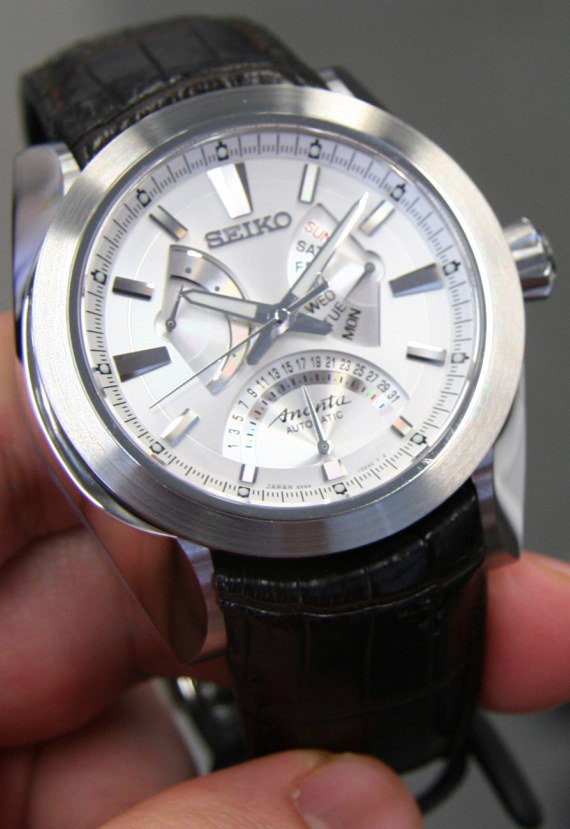
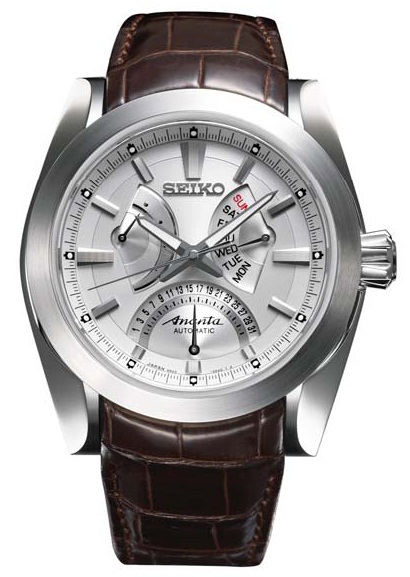
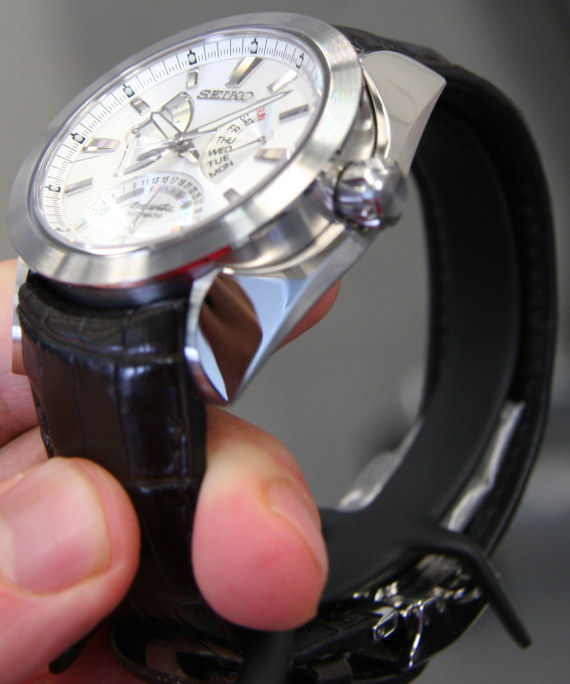
The next two Ananta Automatic watches are both calendar watches. They are so similar and within $200 in price of each other that I don’t totally understand why they both exist. They even have the same functions. Perhaps Seiko is testing out the popularity of the movements or the styles. The difference is in the layout of the features and the movement. The model that is more expensive further displays the information via two retrograde dials, as opposed to traditional dials. That is it. So really, you just need to decide which one you like.
This duo is known as the Ananta Double Retrograde Automatic, and the Ananta Multi-Hand Automatic. The watches have a more conservative and mainstream look than the very sporty Automatic Chronograph model or the Spring Drive models. This is “your dad’s” Ananta watch. This is not a bad thing at all, and proves that the unique katana sword theme can lend it self to a more subdued look as well. Instead of the marker rich tachymeter scale on the bezel, these bezels are now polished and in black or brushed steel. Dials are either black or silvered, and the watches have either the steel bracelets (that I totally love), or black crocodile straps. It is a good time to remind you that the steel bracelets and crafted from an interesting style of cut and polished steel links with a lovely finish to them. The crocodile straps have push button deployment clasps. For more images of the steel bracelet you can check out the the link above to the Ananta Spring Drive article.
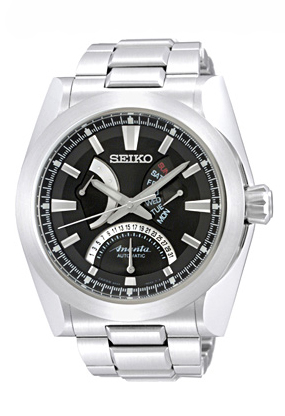
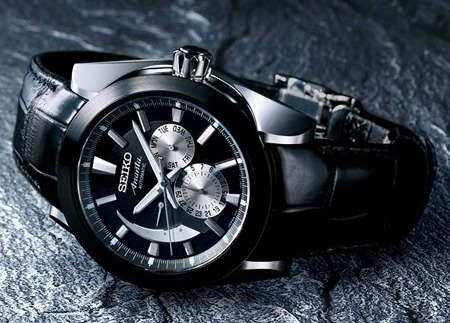
Both of these watches feature brand new Seiko automatic movements. Inside the Double Retrograde Automatic is the Seiko 6R24 movement that has retrograde indicators for the date and date of the week, along with a power reserve indicator (about 45 hours in the movement). The layout is balance and symmetrical. It makes for an attractive, modern, and very Japanese look (for example the retrograde dials look like fans). A good design for a nicer Seiko watch. This is going to be a hot seller for Seiko.
The Ananta Multi-Hand Automatic watch does the exact same things, but without the fancy retrograde dials – inside it is the also new Seiko 6R21 automatic movement. It has a power reserve indicator shaped like a sword that is similar to that on the Spring Drive watches and two traditional dials with hands for the day and date indicators. This is a more traditional asymmetric Seiko look. It is true that while the watch does the same things as the Double Retrograde Model, it looks a lot different visually. To me it is like a baby brother of the Ananta Spring Drive Chronograph model. It is also priced at about a third as much. These are going to be attractive entry level Ananta watches. They still have the high quality cases, design, and in-house Seiko movements as the top-end Ananta watches, but with slightly less complex movements and more affordable prices. Again, they are similar in price with the Ananta Double Retrograde Automatic retailing for $2,300 and the with Ananta Multi-hand Automatic retail priced at $2,100.
As I said in the past, I will repeat myself in saying that Seiko was wise in releasing the Ananta watches to the world market for at least two reasons. First is that the watches are of the first Japanese watches for the world market that have a true sense of traditional Japanese aesthetic to them. A big part of this is in the connection to the famous katana, and the clever design around that theme. Second is that Seiko is finally offering to the world its fantastic higher-end watches. As of right now Japan still gets the highest-end Seiko stuff to itself, but that is slowly going to change I believe. With Ananta, the global market is starting to get a taste of the quality and level of performance that Seiko can offer, and Europe is likely cringing at the new tough competition when it comes to design, movement engineering, and of course price. The real hard part is educating consumers on how good these watches actually are. Experiences in certain retail locations such as Macy’s where the average client is not an educated watch lover is that people are put off by the high price of the watches. This is only an issue because people don’t understand who Seiko is targeting with the quality and features of these watches – as it is Swiss brands priced $5,000 and up, as opposed to Seiko’s traditional market competition such as Citizen, Tissot, Hamilton, and others. So if you are a fan of the Ananta and other high-end Seiko watches, do others a favor and share with them what these watches are all about.
